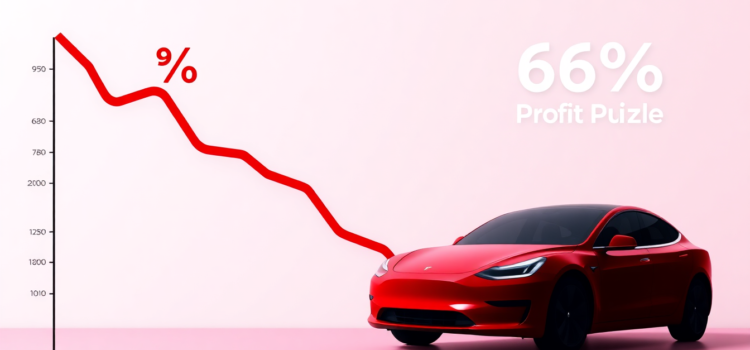
Tesla’s Revenue Drops 9% to $19.3 Billion, Profits Plunge 66%
Amidst the volatile financial backdrop of 2023, Tesla faces its latest fiscal challenge as revenue plummets by 9% to $19.3 billion while profits suffer a dramatic 66% decline. What strategic reshuffles and market dynamics have led to this shift? This report delves into the intricacies of Tesla’s recent financial performance.
Understanding the Revenue Decline
Tesla’s recent revenue drop is not an isolated event but rather a confluence of various market factors. Primarily, the downturn is attributed to decreased sales in some pivotal global markets coupled with heightened competition from emerging electric vehicle brands. Additionally, fluctuating raw material costs have posed significant challenges to maintaining robust profit margins.
Impacts of Global Market Dynamics
The global automotive landscape is undergoing transformational changes, with numerous countries adopting stringent environmental policies and incentives towards electric vehicles. However, Tesla’s market share continues to be challenged by aggressive competitors who offer similar technological innovations at more competitive prices. This shift necessitates strategic adaptations in pricing and production efficiencies.
Strategic Financial Decisions and Their Outcomes
In a bid to counteract decreasing profit margins, Tesla has shifted focus towards structural cost reduction and efficiency optimization. By investing in advanced manufacturing techniques and supply chain enhancements, Tesla aims to stabilize its financial trajectory. However, such strategic pivots demand considerable time and resources, thus affecting short-term financial outcomes.
Fluctuations in Material Costs
The global supply chain disturbances and resultant price volatility in core materials such as lithium and cobalt have had direct implications on Tesla’s production costs. This has pressured the company to rethink its procurement strategies while pushing for sustainable and localized sourcing methods to mitigate future financial impacts.
Innovations and Future Outlook
Despite current financial constraints, Tesla continues to focus on innovation with the impending launch of next-generation battery technology and autonomous driving features. Such advancements are poised to reinvigorate market interest and restore investor confidence. Nevertheless, sustained success will broadly depend on quickly adapting to changing regulatory and market landscapes.

- Strategic reshuffle and market dynamics impact Tesla’s revenue.
- Global challenges necessitate adaptive strategies.
- Innovations in technology aim to revitalize market positioning.










Comments